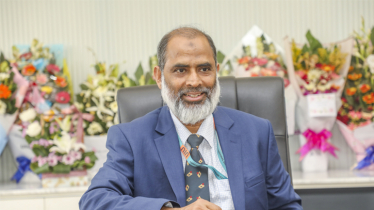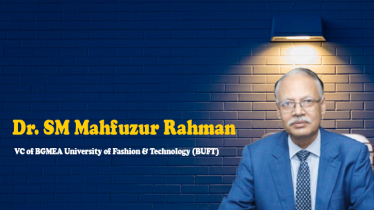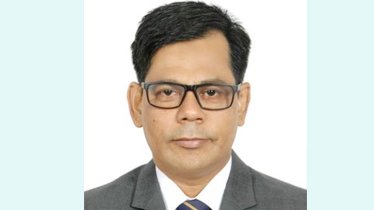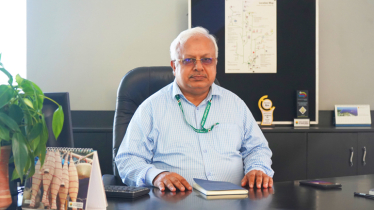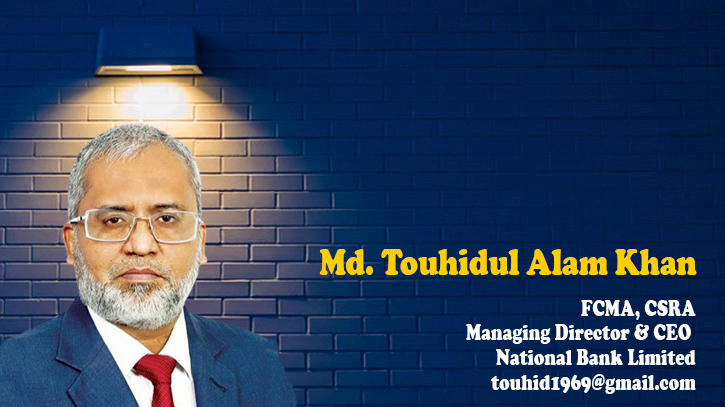
Photo : Messenger
In Bangladesh's dynamic and evolving financial landscape, the role of a bank’s Chief Executive Officer (CEO) stands as one of the most demanding and stressful. The myriad responsibilities ranging from stringent regulatory compliance to managing economic volatility, fierce market competition, and balancing stakeholder expectations create a high-pressure environment. This comprehensive analysis explores the diverse stressors that shape the professional life of a bank CEO in Bangladesh, drawing from my practical experience and the intense pressures faced in this role.
The regulatory tightrope
Stringent compliance requirements: The regulatory environment in Bangladesh is stringent, with the Bangladesh Bank enforcing a complex web of regulations aimed at ensuring financial stability and consumer protection. Compliance with these regulations demands extensive reporting, regular audits, and continuous updates to internal processes. CEOs must ensure their institutions adhere to these regulations without fail. The burden of maintaining compliance amidst an ever-evolving regulatory landscape adds considerable stress to their roles.
Compliance is not just about adhering to laws but also about building a robust framework that can withstand scrutiny from regulators. This involves setting up detailed internal controls, training staff on regulatory requirements, and keeping abreast of any changes in the regulatory landscape. The constant pressure to remain compliant and the repercussions of any missteps amplify the stress on bank CEOs.
Managing multifaceted risks: Risk management is another critical area that falls under the CEO's purview. Banks in Bangladesh face various types of risks, including credit risk, market risk, operational risk, and liquidity risk. CEOs are tasked with creating and implementing comprehensive risk management frameworks that can mitigate these risks while fostering growth.
Credit risk involves ensuring that loans are given to creditworthy individuals and businesses. Market risk requires CEOs to hedge against fluctuations in market prices, interest rates, and exchange rates. Operational risk management involves safeguarding against internal failures such as fraud or system breakdowns, while liquidity risk management ensures the bank can meet its short-term obligations. The complexity and interdependence of these risks demand acute strategic foresight and meticulous planning, adding to the CEO's stress.
Economic volatility
Fluctuating domestic economy: The Bangladeshi economy, despite its steady growth trajectory, is subject to fluctuations that impact the banking sector. Economic instability manifests through inflation, currency devaluation, and interest rate changes, which directly affect banks' profitability and their ability to meet financial targets. CEOs must be adept at anticipating these economic trends and adjusting their strategies accordingly to mitigate adverse effects.
Inflation erodes the value of money, affecting both the bank's operations and its customers. Currency devaluation impacts international trade and investments while fluctuating interest rates can influence lending and borrowing behaviors. CEOs must navigate these complexities, often making difficult decisions to balance growth and stability in an unpredictable economic environment.
Global economic influences: Global economic events further complicate the scenario for Bangladeshi banks. International market volatility, trade tensions, and shifts in foreign investment flows can significantly impact the local banking sector. CEOs need to stay informed about global trends and be prepared to respond to these external factors swiftly. This constant need for vigilance and adaptability adds another layer of stress to their roles.
For instance, changes in global interest rates can affect capital flows to and from Bangladesh. Trade tensions between major economies can impact Bangladesh's export-driven industries, indirectly affecting banks. CEOs must be agile, adapting their strategies to safeguard their institutions against such global influences.
Intense market competition
Fierce competitive environment: The banking sector in Bangladesh is intensely competitive, with numerous public and private banks vying for market share. CEOs must develop and implement innovative products and services to attract and retain customers, necessitating significant investments in technology and talent. This requires continuous strategic planning and flawless execution, which can be a significant source of stress.
CEOs need to foster a culture of innovation within their banks, encouraging teams to develop new financial products that meet the evolving needs of customers. They must also focus on enhancing customer experience through better service delivery and digital transformation.
Keeping ahead of the competition involves not just strategic foresight but also relentless effort to maintain and improve operational efficiencies.
Technological advancements: The rapid pace of technological advancements presents both opportunities and challenges for banks. CEOs must ensure their institutions adopt cutting-edge technologies to enhance operational efficiency and customer satisfaction. This includes embracing digital banking, mobile banking, and robust cybersecurity measures. However, integrating these technologies is complex and costly, and the constant threat of cyberattacks adds to the stress.
Digital transformation requires significant investments in IT infrastructure and cybersecurity. CEOs must balance these investments with the need to generate profits and ensure the bank's long-term viability. The fear of cyber threats, which can lead to data breaches and financial losses, looms large, adding another layer of complexity and pressure to their roles.
Stakeholder expectations
Meeting shareholder and investor demands: Bank CEOs are under relentless pressure to deliver strong financial performance to satisfy shareholders and investors. This involves balancing short-term profitability with long-term growth strategies. The volatile economic environment makes it particularly challenging to consistently meet these expectations. Failure to do so can lead to a loss of investor confidence and adversely affect the bank’s stock price.
Shareholders expect regular dividends and stock appreciation, while investors look for robust financial performance indicators. CEOs must manage these expectations while navigating economic uncertainties and competitive pressures. The constant scrutiny from shareholders and the need to maintain investor relations can be a significant source of stress.
Workforce management: Managing a large and diverse workforce is another critical responsibility for bank CEOs. They must ensure employee satisfaction, foster a positive organizational culture, and address HR issues promptly. Talent acquisition and retention, especially in a competitive market, add to the complexity of their role. Effective leadership and communication skills are paramount, and the demands of managing human capital can be a significant source of stress.
CEOs need to implement policies that promote a healthy work-life balance, provide opportunities for professional development, and create an inclusive work environment. They must also navigate labor regulations and manage union relations, ensuring that any disputes are resolved amicably. The challenge of maintaining a motivated and productive workforce amidst constant external pressures adds to the CEO’s stress.
In-House Pressures
Managing board relations: CEOs must navigate the complex dynamics of managing relationships with the board of directors. This involves aligning the board’s strategic vision with the operational realities of the bank, which can often be a source of conflict. The board’s expectations can sometimes be at odds with market conditions or the bank’s capabilities, placing the CEO in a delicate position of managing expectations while driving performance. The CEO must have the autonomy to operate independently from the board, without unprofessional interference from the chairman or any board members. Such interference significantly heightens mental stress, exerts serious pressure on daily tasks, and diminishes the CEO's productivity. If there is a language barrier, it adds another layer of complexity to the problem and different types of stresses.
Regular board meetings, performance reviews, and strategic discussions are part of the CEO’s routine, requiring them to present comprehensive reports and justify their decisions. The pressure to meet board expectations, coupled with the need to maintain a harmonious relationship, adds a significant layer of stress.
Internal Politics
Like any large organization, banks are often rife with internal politics. CEOs must navigate these dynamics, balancing the interests of different departments and key personnel. Internal politics can lead to power struggles, resistance to change, and conflicts that can derail strategic initiatives. Managing these internal conflicts requires diplomacy, strategic acumen, and often, tough decision-making.
Talent management: Ensuring the bank has the right talent in place is crucial for its success. CEOs are responsible for attracting, retaining, and developing top talent. This involves creating a positive work culture, providing opportunities for growth, and addressing employee concerns promptly. In a competitive market, retaining skilled professionals is particularly challenging, adding to the CEO’s stress.
CEOs must also ensure that their teams are motivated and aligned with the bank’s goals. This involves regular engagement with employees, understanding their needs, and fostering an environment of collaboration and innovation. The pressure to maintain a high-performing team amidst external and internal challenges is significant.
External pressures on bank CEOs
In addition to internal dynamics, bank CEOs in Bangladesh face significant external pressures that compound their stress levels. External pressures such as heavy waivers on recovery, sanctioning loans without due diligence, and undue transfers or postings, among other issues, contradict banking rules and regulations and undermine professionalism. These external challenges require astute strategic planning and resilient leadership, making the role of a bank CEO exceptionally demanding.
Public and media relations: As the public face of the bank, the CEO must maintain a positive image in the media and public eye. Negative publicity, whether justified or not, can damage the bank’s reputation. Effective crisis management and communication are essential skills for CEOs to address any issues that arise. The constant scrutiny and pressure to maintain a positive public image contribute to the overall stress of the role.
CEOs must be proactive in their communication strategies, engaging with the media, stakeholders, and the public to convey the bank’s achievements and address any concerns. They must also be prepared to manage crises effectively, whether it’s a financial downturn, a scandal, or a cyberattack. The need to navigate these public relations challenges adds another dimension to the CEO’s stress.
Balancing personal life and health
Striving for work-life balance: The demanding nature of a bank CEO’s role often leads to long working hours, leaving little time for personal life and relaxation. Achieving a work-life balance is crucial for mental and physical well-being, but it is often challenging for CEOs. The relentless pressure to perform can lead to burnout and stress-related health issues, making it imperative for CEOs to find ways to balance their professional and personal lives.
CEOs must make a concerted effort to prioritize their health and well-being. This can involve setting boundaries to ensure they have time for family and personal interests, engaging in regular physical activity, and seeking opportunities for relaxation and rejuvenation. Maintaining a work-life balance is not just about personal well-being but also about sustaining the energy and focus required to lead effectively.
Effective stress management: To maintain productivity and well-being, effective stress management is essential. CEOs should engage in regular physical activity, and hobbies, and spend quality time with family to mitigate stress. However, the high demands of the job often make it difficult to find time for these activities. Seeking professional support, such as coaching or therapy, can also be beneficial in managing stress and maintaining overall health.
Stress management techniques such as mindfulness, meditation, and time management strategies can help CEOs cope with their demanding roles. Professional coaching can provide valuable insights and strategies for navigating complex challenges, while therapy can offer support in managing the emotional toll of the job. Prioritizing stress management is crucial for sustaining long-term success and well-being.
Recovery from Non-Performing Loans
One of the foremost challenges for bank CEOs is the recovery of non-performing loans (NPLs). These bad loans, often sanctioned without proper due diligence or adequate collateral, pose significant difficulties. In some instances, collateral may be minimal or even fraudulent, with loans granted through collusion with bank officials. The situation becomes even more complex and daunting if these loans were approved under direct influence, especially when the beneficiaries are board directors. This scenario presents multifaceted problems for CEOs, including intense pressure and potential conflicts of interest, making loan recovery efforts exceptionally challenging. The process can also entail personal risks, as attempts to recover these loans may result in threats or intimidation, significantly heightening the CEO's mental stress.
Conclusion
The role of a bank CEO in Bangladesh is undeniably stressful, shaped by a complex interplay of regulatory pressures, economic volatility, market competition, and stakeholder expectations. Despite these challenges, effective leadership and strategic management can help CEOs navigate these pressures and steer their banks toward success. Prioritizing well-being and seeking support to manage stress is crucial for CEOs to sustain their performance and lead effectively.
Understanding and addressing the stressors faced by bank CEOs is not only essential for their well-being but also for the stability and growth of the banking sector. By acknowledging these challenges and supporting CEOs in their efforts to manage stress, we can ensure a more resilient and robust financial system in Bangladesh.
Md. Touhidul Alam Khan is the Managing Director & CEO of National Bank Limited. He is also a fellow member of the Institute of Cost & Management Accountants of Bangladesh (ICMAB).
Messenger/Fameema

